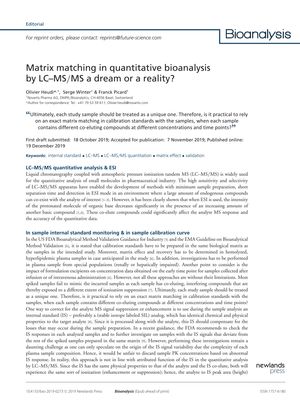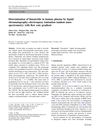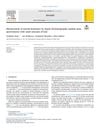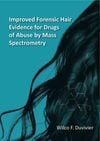Matrix Matching in Quantitative Bioanalysis by LC-MS/MS: A Dream or a Reality?
December 2019
in “
Bioanalysis
”

TLDR Accurate quantitative bioanalysis using LC-MS/MS is challenging due to matrix effects, but using internal standards and new methods like in-sample calibration could improve results.
The document discusses the challenges and potential solutions in achieving accurate quantitative bioanalysis using LC-MS/MS, particularly regarding the matrix effects that can impact the accuracy of quantitative data. It highlights the limitations of matrix matching, where calibration standards are prepared in the same biological matrix as the study samples, due to the presence of different co-eluting compounds in each sample. The use of an internal standard (IS), especially a stable isotope-labeled analog, is suggested to correct for MS signal suppression or enhancement. The paper also introduces the concept of in-sample calibration curves (ISCC) as a novel approach that eliminates the need for external calibration in a similar matrix. The conclusion suggests that monitoring the IS signal during sample analysis and assessing each case individually, without necessarily rejecting sample concentrations based on abnormal IS response, is important. The advancements in analytical technology and novel approaches like ISCC could simplify guidelines and reduce the time and cost associated with routine analysis.



